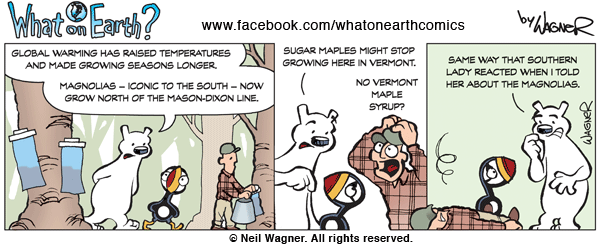

The sugar maple -- long synonymous with Vermont and its maple syrup industry -- may be under assault. As Bruce Dorminey of Climate Central writes, the maple is just one of the many trees making a shift northward, indicative of longer growing seasons and warmer temperatures. It's thought the maple may move out of Vermont completely and reside solely in Canada. Goodbye "Vermont Maple Syrup," hello "Vermont Style Maple Syrup"?
This massive maple migration is no small thing -- about one in four Vermont trees is a maple. The Green Mountain State's maple industry generates about $15 million in annual sales, and the tree's overall economic impact on the state's economy is over $226 million annually, according to the University of Vermont.
But that's not all. Vermont's leaves are changing color 6-8 days later than the historical average, and climate change may be impacting the rest of New England as well. Massachusetts' leaves are changing 3 days later than just 20 years ago, and the sugar maple also makes itself part of this story in New Hampshire, where it's going dormant 2-5 days earlier than 20 years ago.
Richard Primack, Professor of Biology at Boston University studies timing in nature (phenology) and says spring is arriving earlier all over New England, where the long term weather has gotten 1-2 degrees (F) warmer over the last 150 years. Over that time, flowers have started blooming 7-10 days earlier in the spring. Primack also says that leaves change color and fall later throughout the U.S.
Climate Central's Dorminey also cites research that says climate change may be responsible for another iconic tree -- the Magnolia -- broadening its horizons as well. While the tree is traditionally linked to the southern United States, it's now being spotted north of the Mason-Dixon Line.
A Yankee Magnolia? That's as outrageous as measuring the wind chill in Florida! Oh, wait... that can happen now too.
Get more What on Earth? at NPR's ScienceFriday.com and Facebook.